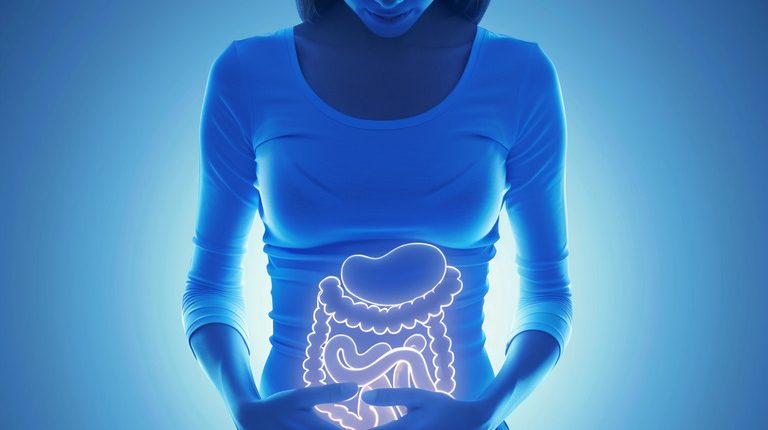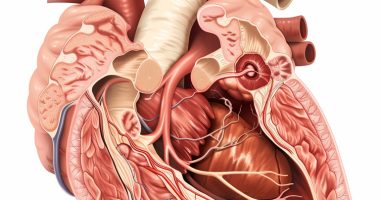Stomach cancer
What is stomach cancer?
Gastric cancer develops from the epithelial cells of the stomach. At first, the tumor affects the mucous membrane of the stomach, and as it grows, it penetrates the muscular and serous membranes and destroys the organ’s wall.
Malignant gastric tumors are usually diagnosed in people 40-60 years old, more often in men. About 80% of patients haveadvanced forms. Most of them are found to have metastases. In the overall structure of oncological pathologies, malignant gastric tumors occupy the third place as a cause of mortality among adults.
In most cases, tumors are formed by malignant transformation of epithelial cells (adenocarcinoma). Squamous cell cancer accounts for about 6%. Other forms are much less common.
A peculiarity of malignant gastric tumors is their propensity to metastasize. Secondary foci can be found in lymph nodes, other parts of the gastrointestinal tract (GIT), and lungs.
They cause a variety of dysfunctions and internal bleeding.
Types of stomach cancer
The International Classification of Cancer (TMN) involves the evaluation of the pathologic process according to three characteristics:
- T (primary tumor prevalence). Stage zero corresponds to pre-cancer; stage one is – the superficial location of the tumor in the mucosal layer, stage two is – the involvement of submucosal and muscular layers, stage three is – the involvement of the entire gastric wall, and stage four is – the involvement of nearby organs.
- N (metastasis to lymph nodes). At stage zero, lymph nodes are not involved; at stage one, atypical cells are detected in regional lymph nodes; at stage two, in distant lymph nodes; and at stage three, multiple groups of lymph nodes may be affected.
- M (metastases to distant organs). At stage zero, secondary tumors are absent; at stage one, they are detected in target organs.
Depending on the size, location of the primary tumor, and spread of metastases, each stage is divided into substages (A, B, C).
Symptoms of stomach cancer
The early stages of the disease are often hidden. During this period, tumors are discovered accidentally – during examination for another disease or in connection with the appearance of nonspecific symptoms of digestive tract pathology.
Manifestation of the disease usually occurs in stage 2-3 of the disease. At this time, the following symptoms may appear:
- heartburn;
- an unpleasant burp;
- heaviness in the abdomen after eating;
- an aversion to certain foods;
- flatulence;
- nausea;
- decreased appetite;
- weakness;
- rapid fatigue;
- unwarranted weight loss;
- subfebrile.
At later stages, symptoms are due to complications (bleeding, damage to neighboring or distant organs). At stages 3-4, the manifestations of cancer may be:
- vomiting blood;
- melena (black stools);
- blunt and sharp pains of various localizations;
- pronounced weight loss (on the verge of emaciation);
- feeling of fullness in the stomach when eating small amounts of food;
- ascites (fluid buildup in the abdomen);
- jaundice, etc.
Causes of stomach cancer
The mechanism of gastric mucosal cell degeneration is still unknown to scientists. Predisposing factors are recognized:
- unfavorable family history (cases of digestive tract cancer in close relatives);
- chronic diseases of the gastrointestinal tract;
- Helicobacter pylori;
- gastric surgeries;
- bad habits (smoking, alcohol consumption);
- toxic exposure to chemicals.
Stress, poisoning, taking medications, and violations in the diet (lack of fruits and vegetables, abuse of smoked meats, fatty foods, convenience foods, etc.) can provoke the development of tumors.
Diagnosing gastric cancer
The main method of diagnosing stomach cancer is EGD (esophagogastroduodenoscopy). During the procedure, an endoscope (a flexible tube with a camera at the end) is inserted into the stomach cavity. The image from the camera is displayed on a monitor. In the process of studying the mucosa, the localization of the tumor and its approximate size are determined. To determine the histologic type, a biopsy is performed (tissue sampling from the focus of degeneration). The obtained fragment is sent for morphologic examination. Based on the study’s results, the diagnosis is verified, and the degree of malignancy of the tumor is assessed.
This information is essential in the selection of treatment tactics. X-ray studies are performed to assess the size of the tumor. CT or MRI with contrast is performed to assess the state of lymph nodes and other organs. In addition, laboratory tests for oncomarkers are performed.
Gastric cancer treatment
In almost all cases, the treatment of oncologic diseases is carried out in a comprehensive manner using radical and conservative methods. Therapeutic tactics are selected personally, considering the histological type of tumor and the stage of disease development.
The primary way to treat gastric cancer is surgery. At early stages, partial preservation of the organ is possible; at later stages, total removal is performed.
Chemotherapy to eradicate residual malignant cells may be administered before or after intervention. For inoperable tumors, a palliative approach is used.
Doctors do everything possible to slow the progression of the disease and improve the patient’s quality of life.
Conservative treatment
In gastric cancer, courses of chemotherapy and targeted therapy are carried out. In the first case, various combinations of drugs with toxic properties are used, which attack tumor cells, block their division processes, and restrain tumor growth. An unfavorable effect of chemotherapy is the toxic effect of drugs on healthy cells, so the treatment is tolerated quite severely.
Targeted drugs have an affinity for malignant cells at the molecular genetic level. They are incorporated into the cell’s life cycle and provoke cell death. Such substances do not significantly affect healthy cells, and patients tolerate the treatment much better (compared to chemotherapy).
Surgical treatment
Surgical methods of cancer treatment involve partial or complete removal of the stomach. Organ-preserving surgeries are performed at the initial stages of the disease and involve the removal of 30-60% of the stomach (upper or lower part, depending on the tumor location). The integrity of the organ is restored by creating an anastomosis.
Gastrectomy involves the complete removal of the organ. During the operation, lymph node dissection (removal of regional lymph nodes) is often performed. In total gastrectomy, the stomach and surrounding tissues are removed. Organs in which malignant cells have penetrated are subject to partial or complete removal. The functions of the GI tract are restored with the help of anastomoses.
In palliative surgeries, when tumor removal is inadvisable, the patency of the GI tract is restored. For this purpose, a false stomach is formed (“bypassing” the tumor), or a stent is placed (the latter restrains tumor growth and reduces pressure on the surrounding tissues).
All these treatment options are available in more than 860 hospitals worldwide (https://doctor.global/results/diseases/stomach-cancer). For example, total gastrectomy is performed in 22 clinics across Turkey for an approximate price of $13.4 K (https://doctor.global/results/asia/turkey/all-cities/all-specializations/procedures/total-gastrectomy).
Gastric cancer prevention
Since the mechanism of development of most cancer pathologies is not fully understood, there are no measures that can protect against cancer. However, it is within the power of each individual to minimize the impact of triggering factors. The following measures can help reduce the risk of the disease:
- preventive screenings;
- timely treatment of GI diseases;
- nutritionally sound diet;
- avoiding bad habits.
Rehabilitation after surgical treatment
After surgery, drug therapy is carried out to prevent complications. The patient is prescribed a diet that must be adhered to for life. After achieving remission, all cancer patients should regularly undergo a comprehensive examination by an oncologist with laboratory and instrumental diagnostics.




